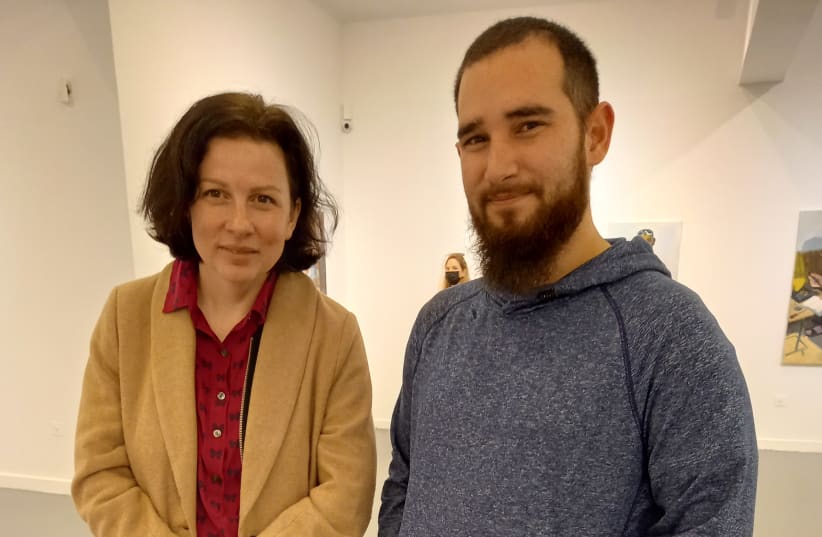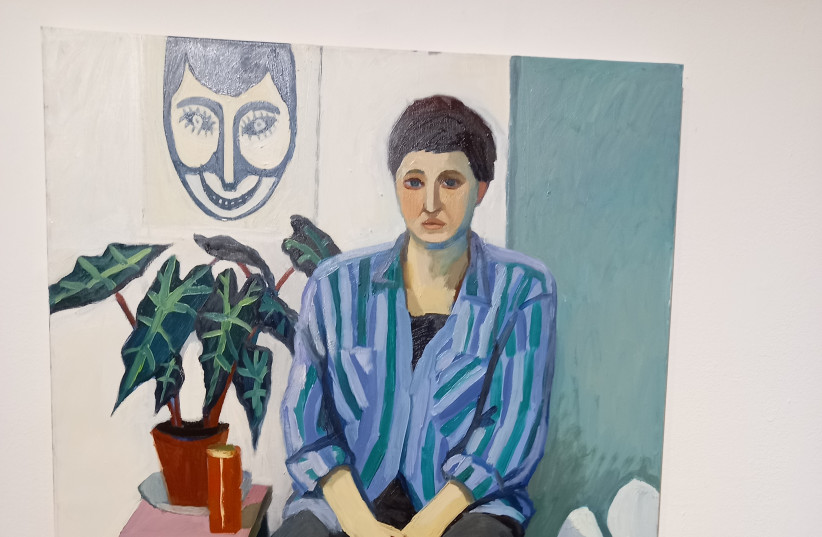Haifa as a multi-cultural city is an appropriate location for the new exhibition at the Haifa Museum of Art, linking communication by voice and facial expression through vision and sound.
In a tour of the exhibition guided by the chief curator, Kobi Ben-Meir, two international artists and an Israeli immigrant from Russia presented work that was connected by human individual and collective relationships and the environment, in the context of social, economic and political status.
Yotam Yakir, director-general of Haifa Museums, spoke of the tradition of the Haifa Museum of Art involving artists in shaping the museum’s identity. By connecting these three exhibitions, the museum had invited the artists to attend the opening and give commentary on their own work.
“Haifa is not only a city of varied cultures but its panorama is multi-layered, peaked by the green spaces of the Carmel suburbs, with the downtown seaport and the Hadar on the lower slopes.”
Adrian Paci, the Albanian video artist now living in Milan, was charming, speaking in perfect English chatting with journalists over coffee before commentating on his exhibit. His work has been shown in major international museums, including the Guggenheim and MOMA in New York, and the Pompidou Center in Paris.
In his Still Voices, collection, Paci examines political upheaval, homelessness because of the rebuilding, and displacement through voice. Broken Words views Syrian refugees who have escaped to Beirut and are relating their experiences.
In The Wanderers, a work he premiered at the Haifa exhibition, he shows two simultaneous panoramas of a track connecting distant mountains in Albania with the viewer. On one screen, random images in black and white are walking alone away from the viewer, animals crossing their path, a metaphor for the isolation of corona. On the other screen, in color, groups of figures walk toward the camera until they congregate together with a bride and groom, an icon of recreation of a community.
A very moving exhibit by Paci is the video installation Sue Proprie Mani (to the addressee only). Using again the medium of the two screens, a mother is reading a letter sent to her soldier son in World War II Albania, and on the other, a wife is writing to her husband, both letters expressing concern for their health and welfare and longing for their reunion, letters never delivered.
The viewer does not see the writer, just sees the handwritten paper and hears the voice.
Paci himself was a migrant from Albania to Italy, and in his work the viewer sees the search for identity through his stories and voices.Turkish artist Volkan Kiziltunc had unfortunately contacted corona and expressed his disappointment over the telephone.
In his work The Look, with a background of destroyed buildings and makeshift homes, he juxtaposes still photographs with video recording, showing the changing expressions of the subjects. He had asked the victims of homelessness rebuilding an Istanbul neighborhood to look at the camera for 30 seconds and make eye contact, and continued to film them as they moved. The focal point is the human contact, although the background puts their displacement in context.
Kiziltunc was inspired by the early 20th-century German photographer August Sander, who for 40 years photographed Germans in their environment. One hundred years separate these two photographic artists, but Sander’s influence is seen in Kiziltunc’s pictures of urban modern-day Turkey, portraying figures in the context of their natural environment. Seven rare prints of Sander’s are displayed together with the work of Kiziltunc.
Anna Lukashevsky’s exhibition Types, the first solo by this artist, truly represents Haifa’s diverse demographic environment. She works from her studio in the Hadar neighborhood, an area slowly emerging from grimy run-down once-beautiful International Style buildings and shuttered businesses to space for artists and trendy restaurants.
Designed as a garden city, it is like an aging woman worn by time but retaining her bone structure. Far from the fashionable town center originally built, there is a very diverse population of students, new immigrants, asylum seekers, mostly low-income, those who cannot afford to rent or buy on the Carmel or in the suburbs, and also those who are attracted by its quirky environment. The artist grew up in Vilnius and admits she has not lost her socialist aspirations.
Lukashevsky works rather in the style of Zadock Ben-David whose amazing miniatures were exhibited at Tel Aviv Museum of Art a few months ago. Ben-David wanders the world, taking photographs of interesting types, and using the photos, makes the most intricate miniature figures projecting the posture and expression of the subject.
Lukashevsky however wanders the Hadar, looking for facial expression, ethnic and social characteristics but with something unique that attracts her attention. She then draws a quick sketch, approaches them, and invites them to come to her studio so that she can talk to them, explore the layers of their personalities and paint the finished work.
Accompanying this writer on the tour was a relative, Itamar Blumfield, who is a young art school graduate now studying architecture. He was intrigued by the exhibition’s leitmotif of communication by voice and body/facial language through painting and video installations. He shared with Anna Lukashevsky some of his own research into the history of communication as our language becomes more complex. “Now we have the tools to understand complex values, and her art form reflects society as individuals, their lifestyle and their identity,” he said.
Ben-Meir noted that political correctness is a relatively modern concept, and appreciates that Lukashevsky characterizes human beings by their appearance, their dress, their body and facial language, whether they be Arabs or Jews of varied denominations and origins. However, when she sits for a time with her subject, she separates the stereotypes and builds on the multi-facets of the individual human being.
The Haifa Museum of Art was established in 1951 at the initiative of Abba Hushi, probably the most innovative mayor that Haifa has had. Originally sited in the Town Hall, it is now located in the three-story stone building at 26 Shabtai Levi on the Hadar. This is part of the chain of Haifa museums situated at various locations around the city: The Tikotin Museum of Japanese Art and Mane Katz Museum near the Central Carmel; the Haifa City Museum in the German Colony; National Maritime Museum near the sea; and the Herman Struck Museum on the Hadar. ■
The exhibition closes on June 25, Haifa Museum of Art, 26 Shabtai Levi Street, Haifa (https:/www.hma.org.il/eng). The picture of artist Afwerki Teame in the article by Wendy Blumfield in the February 21 issue (“Strangers in our land”) was actually painted in its original by Ann Lukashevsky and is currently being exhibited at the Haifa Museum of Art.

